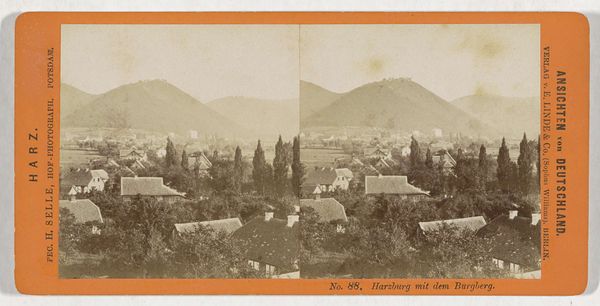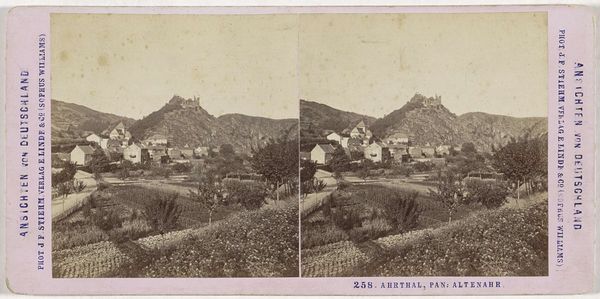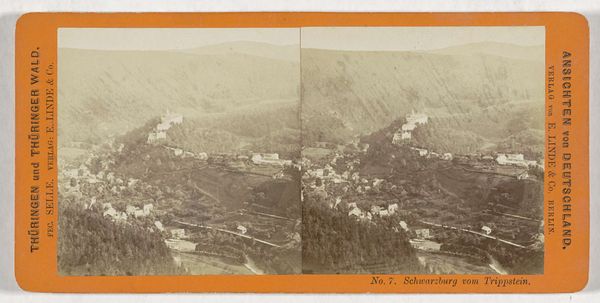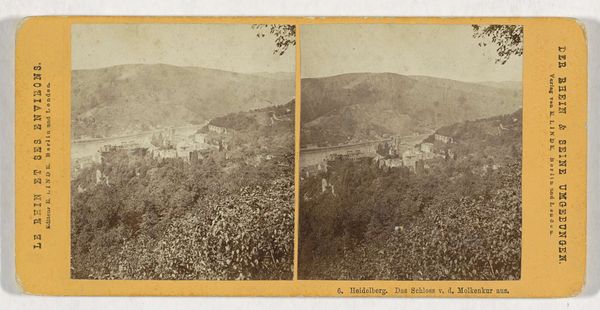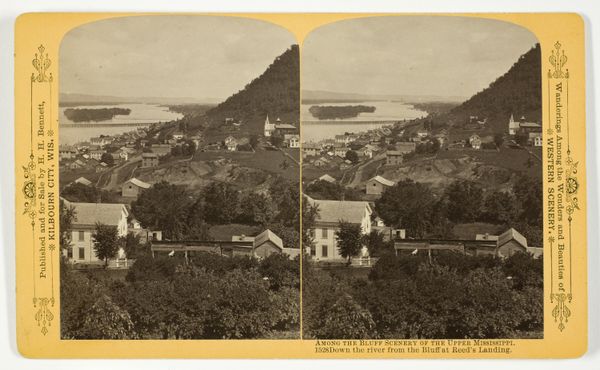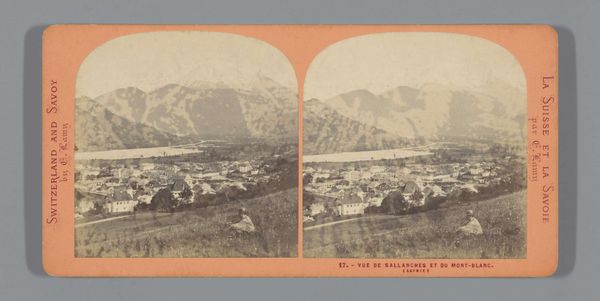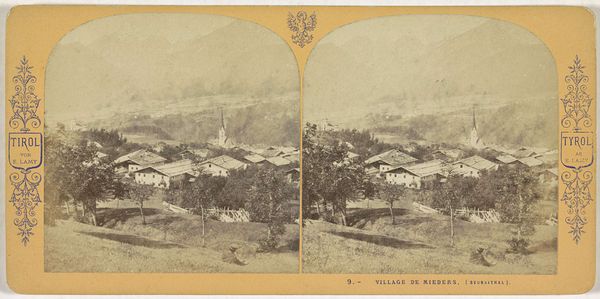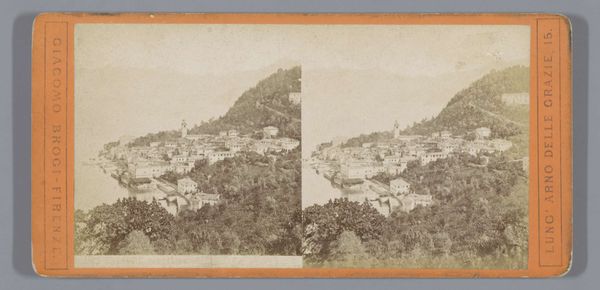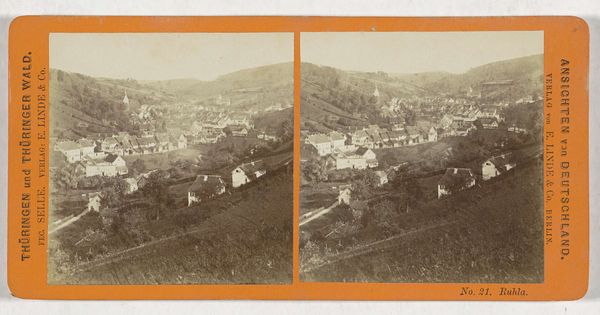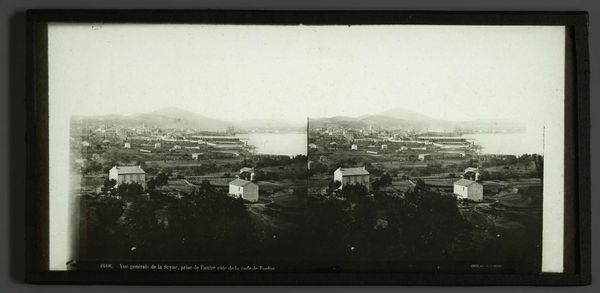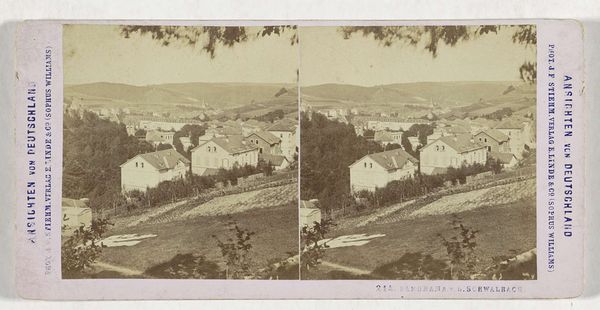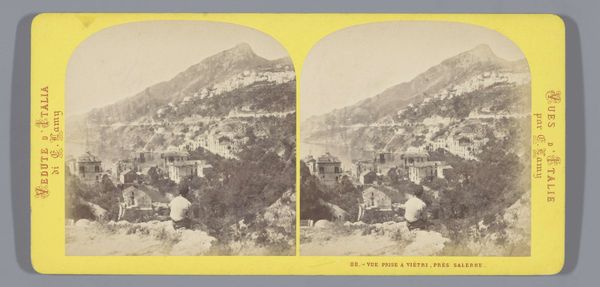
Dimensions: height 86 mm, width 177 mm
Copyright: Rijks Museum: Open Domain
Editor: This is Johann Friedrich Stiehm’s "Zevengebergte bij Bad Godesberg," a photograph, taken sometime between 1867 and 1871. It looks like a quiet, almost idealized view of a small town nestled in the German countryside. What do you see in this piece, in terms of its historical context? Curator: This serene image is deceptively complex. On one level, it's a picturesque landscape, feeding into 19th-century romanticism, which often idealized nature and rural life. But, it was also produced in the period just prior to the unification of Germany. Think about how these depictions of seemingly unified and peaceful locales contributed to a rising sense of national identity and belonging. What are the power dynamics at play when choosing which views and populations are considered worthy of representing this unified Germany? Editor: So, this image, seemingly just a pretty landscape, may have actually played a role in shaping ideas about German identity? I hadn't thought of it that way. Does the fact that it is a photograph, and not a painting, also play a part? Curator: Absolutely! The rise of photography allowed for a sense of "objective" documentation. But remember, every photograph is a construction. Who is deciding what to include, what to leave out? Consider who had access to photography at this time, whose narratives were being privileged and amplified by these images? How did the subjects engage and negotiate their participation? Editor: That’s fascinating! It really opens up my perspective on how to view even seemingly straightforward landscapes. I’ll definitely consider that in my future work. Curator: Precisely, understanding these dynamics can help reveal how national narratives are visually constructed and reinforced, influencing societal values and exclusions even today.
Comments
No comments
Be the first to comment and join the conversation on the ultimate creative platform.
